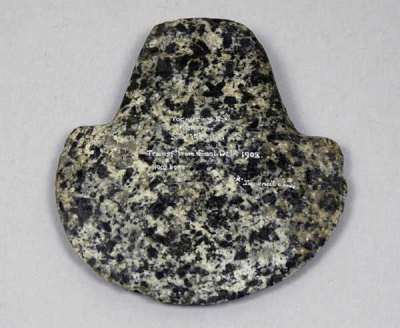Axehead (1902.89.5)
 BrazilAxehead from Brazil, Americas. Collector not known. Transferred to the Museum from the Oxford University Museum of Natural History in 1902.
BrazilAxehead from Brazil, Americas. Collector not known. Transferred to the Museum from the Oxford University Museum of Natural History in 1902.
This large black and white gabbro or granite axe-head is from the Tocantins River in Brazil and if of the mezze-luna (half-moon) form. The presence of 'shoulders' show it would have been inserted through a split haft of wood (such as chonta, an elastic palmwood), which was then lashed above to 'pinch' the blade into place.
It is known that such blades were made and traded by the Gaveo people and used by other Tocantins River groups such as the Apinajes, Chavantes and Cherentes. They were highly prized due to the lack of stone resources and the work involved in their manufacture. As such they may not have been used in combat directly and instead reserved for the mutilation of enemy corpses after the battle.




